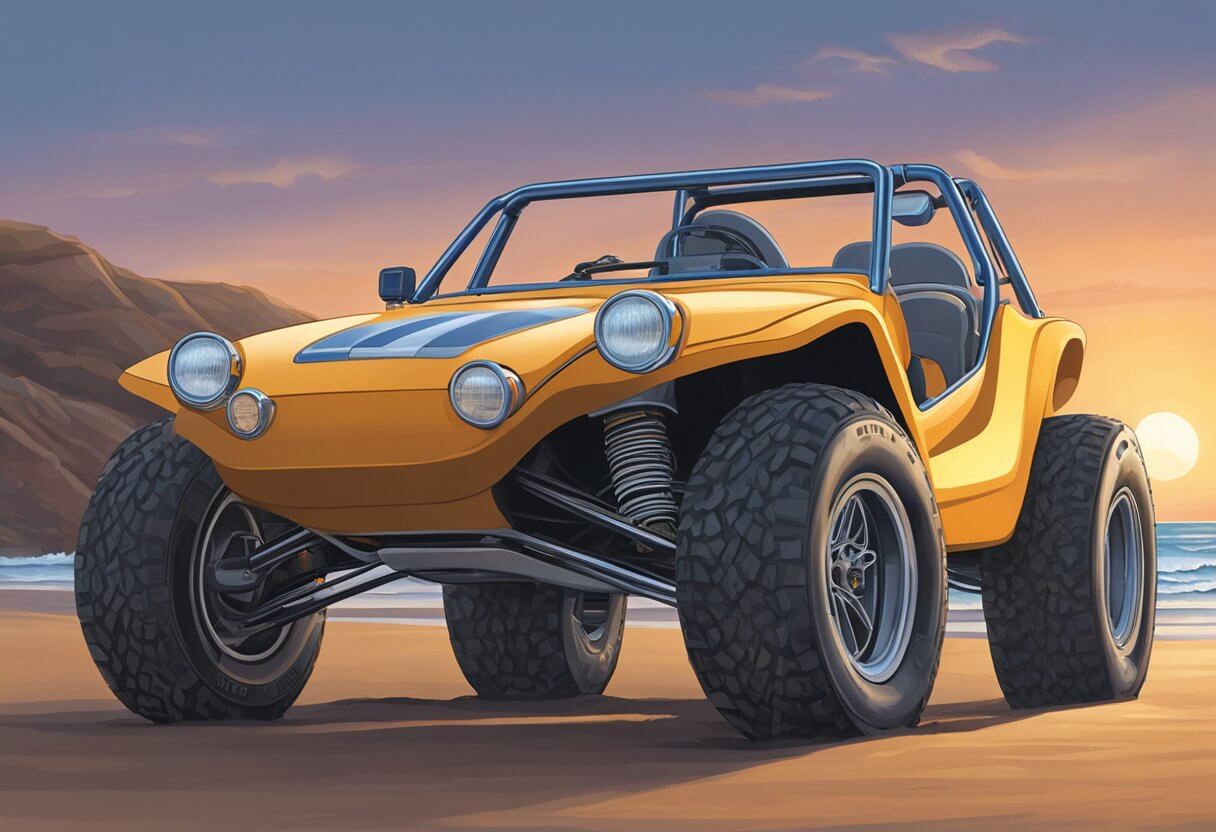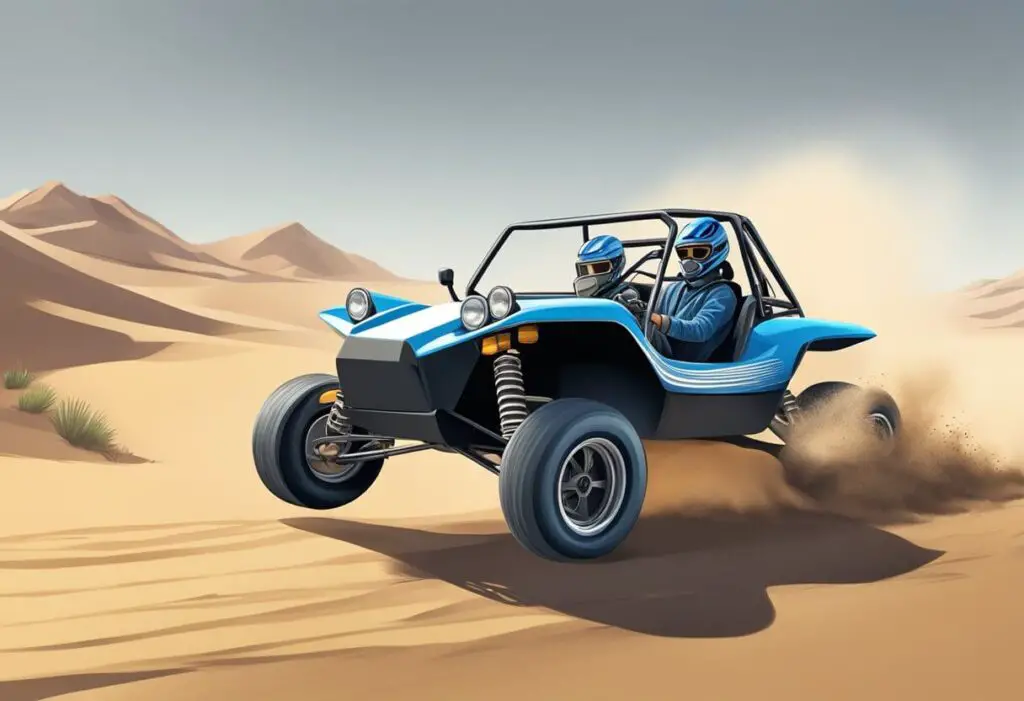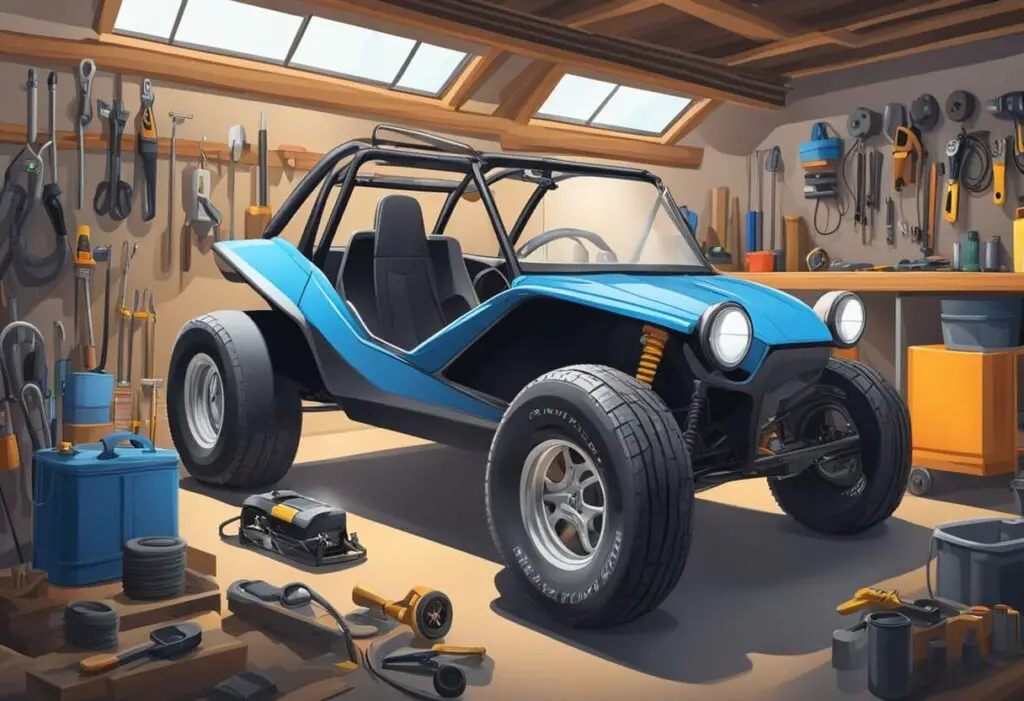Manx Dune Buggy: The Iconic Off-Road Vehicle

The Manx dune buggy is a type of off-road vehicle that has become an iconic symbol of the 1960s. The original Manx was designed by Bruce Meyers in 1964, and it quickly became a popular vehicle for off-road enthusiasts. The Manx was built on a Volkswagen Beetle chassis, and it featured a fiberglass body that was designed to look like a beach buggy. The Manx was lightweight, easy to maneuver, and it could handle a variety of different terrains.
The Manx dune buggy was designed to be customizable, and it quickly became a popular vehicle for those who wanted to modify their cars. The Manx was designed to be easy to modify, and it could be customized in a variety of different ways. Some people added bigger engines, while others added custom paint jobs or other modifications. The Manx was also popular for its ability to handle different types of terrain, and it was often used for off-road racing.
Today, the Manx dune buggy is still a popular vehicle for off-road enthusiasts, and it has become a symbol of the 1960s. While the original Manx is no longer in production, there are many companies that produce replicas of the original design. These replicas are often customized to meet the needs of the modern off-road enthusiast, and they are still prized for their ability to handle a variety of different terrains.
History of the Manx Dune Buggy

Development by Bruce Meyers
The Manx Dune Buggy was first developed by Bruce Meyers in the early 1963s. Meyers, a hot rodder and sailboat builder, was inspired by the desert races of Southern California and wanted to create a lightweight, high-performance vehicle that could handle the rough terrain of the desert. In 1964, Meyers built the first Manx Dune Buggy, which was based on a shortened Volkswagen Beetle chassis and featured a fiberglass body that Meyers had designed himself. The body was inspired by the shape of a clamshell, with a smooth, flowing shape that was both aerodynamic and visually striking.
Rise in Popularity
The Manx Dune Buggy quickly gained popularity among off-road enthusiasts and became a cultural icon of the 1960s. The lightweight and nimble vehicle was perfect for exploring the rugged terrain of the desert, and its unique design and eye-catching colors made it a hit with the counterculture crowd. The Manx Dune Buggy was also relatively affordable, with kits available for purchase that allowed enthusiasts to build their own vehicles using Volkswagen Beetle chassis and Meyers’ fiberglass bodies.
Modern Legacy
Today, the Manx Dune Buggy is still celebrated as a symbol of freedom and adventure. While the original Manx Dune Buggy is no longer in production, there are many companies that produce similar vehicles based on Meyers’ design. In recent years, there has been a resurgence of interest in the Manx Dune Buggy, with many enthusiasts restoring and customizing vintage vehicles, as well as building new ones from scratch. Meyers himself has also continued to be involved in the dune buggy community, and in 2014, he released a new version of the Manx Dune Buggy called the Manx 2.0 Electric Vehicle, which features a modern electric powertrain and updated design elements.
Design and Features
Fiberglass Body
The Meyers Manx dune buggy is known for its distinctive fiberglass body that was designed to be lightweight and durable. The body is made of a single piece of fiberglass, which gives it a sleek and smooth appearance. The fiberglass body is also resistant to rust and corrosion, making it ideal for use in sandy and salty environments.
Chassis and Suspension
The chassis of the Meyers Manx is based on the Volkswagen Beetle, which provides a sturdy and reliable foundation for the dune buggy. The suspension system is designed to handle rough terrain and provide a smooth ride. The front suspension is a torsion bar system, while the rear suspension is a swing axle design. The suspension system is also adjustable, allowing the driver to customize the ride height and stiffness to their liking.
Engine and Performance
The Meyers Manx was originally designed to be powered by a Volkswagen Beetle engine, which provides a modest amount of power and torque. However, modern versions of the dune buggy can be equipped with a variety of engines, including electric and gasoline-powered options. The electric version of the Meyers Manx is known for its quick acceleration and quiet operation, while the gasoline-powered versions are known for their classic sound and performance.
Overall, the Meyers Manx dune buggy is a unique and versatile vehicle that combines classic design with modern technology. Its lightweight fiberglass body, sturdy chassis, and customizable suspension system make it ideal for off-road adventures, while its wide range of engine options allows drivers to choose the level of performance that suits their needs.
Building a Manx Dune Buggy

Choosing a Base Vehicle
Before building a Manx dune buggy, it is important to choose a suitable base vehicle. The most common base vehicle for a Manx dune buggy is a Volkswagen Beetle. The Beetle is a popular choice because it is affordable, easy to find, and has a simple design that makes it easy to work on. Other suitable base vehicles include the Volkswagen Karmann Ghia and the Volkswagen Thing.
Acquiring a Manx Body Kit
Once a suitable base vehicle has been chosen, the next step is to acquire a Manx body kit. There are several manufacturers that produce Manx body kits, including Meyers Manx and Berrien Buggy. It is important to choose a reputable manufacturer that produces high-quality kits. The kit should include all of the necessary parts, including the fiberglass body, hood, fenders, and windshield frame.
Assembly Process
The assembly process for a Manx dune buggy can be challenging, but with the right tools and knowledge, it can be done. The first step is to remove the body from the base vehicle. This involves removing the doors, hood, and fenders. The base vehicle should then be stripped down to the frame. The frame should be cleaned and inspected for any damage.
Once the frame is ready, the Manx body kit can be installed. This involves fitting the fiberglass body onto the frame and attaching the hood, fenders, and windshield frame. The body should be aligned and adjusted to ensure a proper fit. The next step is to install the wiring, steering, and suspension components. The final step is to install the engine and transmission.
Building a Manx dune buggy requires a lot of time, effort, and patience. However, with the right tools and knowledge, it can be a rewarding experience. It is important to take the time to choose a suitable base vehicle, acquire a high-quality body kit, and follow the assembly process carefully.
Customization Options
Manx dune buggies are known for their unique and customizable features that allow owners to personalize their vehicles according to their preferences. Here are some of the customization options available for Manx dune buggies:
Paint and Graphics
One of the most popular ways to customize a Manx dune buggy is by choosing a unique paint color and graphics design. Manx dune buggies come in a variety of colors, including solid gel-coat colors with a polished UV clear coat. Additionally, owners can opt for custom graphics and decals to make their buggies stand out from the crowd.
Wheel and Tire Selection
Another way to customize a Manx dune buggy is by selecting the right wheels and tires. Owners can choose from a variety of wheel sizes and styles to match their preferred driving style and terrain. Additionally, the right tire selection can provide improved traction and handling for off-road adventures.
Interior Customization
Manx dune buggies can also be customized on the inside. Owners can choose from a variety of interior options, including custom seats, steering wheels, and storage solutions. Additionally, owners can opt for custom audio systems and other accessories to enhance their driving experience.
Regulations and Safety

Street Legality
When it comes to driving a Meyers Manx Dune Buggy on public roads, it is important to ensure that the vehicle is street legal. In most cases, off-road vehicles need to be registered and licensed to be allowed on the roads. To make a dune buggy street legal, it is necessary to obtain a special license plate and pay a yearly fee.
Off-Road Regulations
In addition to meeting street legality requirements, it is important to be aware of off-road regulations when driving a dune buggy. Different states have different regulations, so it is important to research and understand the specific rules in your area. For example, in Texas, it is possible to make a dune buggy street legal, although the process is far from straightforward.
Safety Equipment
When driving a Meyers Manx Dune Buggy, it is important to ensure that the vehicle is equipped with the necessary safety equipment. This includes seat belts, roll bars, and other safety features that can help protect the driver and passengers in the event of an accident.
Manx Dune Buggy Culture
Clubs and Communities
The Meyers Manx has a dedicated following, with clubs and communities all over the world. These groups are made up of enthusiasts who share a love for the dune buggy and its unique history. They often organize events and meetups to show off their buggies and share their passion with others.
One such group is the Manx Club, which was founded in 2008 and is dedicated to the preservation and enjoyment of the Meyers Manx. They have members all over the world and regularly organize events and cruises where members can show off their buggies and connect with other enthusiasts.
Another popular community is the Meyers Manx Owners Club, which is based in the UK. They organize events and cruises throughout the year and have a strong online presence, with forums and social media groups where members can connect and share their experiences.
Events and Competitions
The Meyers Manx has a rich history in off-road racing, and there are still competitions and events held today that celebrate its legacy. One of the most famous of these is the Baja 1000, a grueling off-road race that takes place in Mexico each year.
The Meyers Manx has a storied history in the Baja 1000, with Bruce Meyers himself winning the race in 1967. Today, there are still Meyers Manx buggies competing in the race, and it remains a popular event for dune buggy enthusiasts.
In addition to the Baja 1000, there are also smaller events and competitions held throughout the year, such as the Manx on the Banx event in Nantucket, which celebrates the Meyers Manx and its place in dune buggy culture. These events are a great opportunity for enthusiasts to connect and share their love for the Meyers Manx.
Maintenance and Care

Routine Servicing
To keep a Manx dune buggy in top condition, routine servicing is necessary. The buggy’s engine should be checked regularly for oil leaks, loose or damaged parts, and general wear and tear. The oil and air filter should be changed regularly, and the spark plugs should be replaced periodically. The buggy’s brakes and suspension should also be checked regularly and serviced as needed.
Corrosion Prevention
The Manx dune buggy’s fiberglass body is susceptible to cracking and chipping, which can lead to corrosion. To prevent corrosion, the buggy’s body should be washed regularly with a mild soap and water. Any chips or cracks should be repaired promptly to prevent moisture from getting in and causing corrosion. To protect the buggy’s metal components from rust, they should be coated with a rust inhibitor or painted.
Upgrades and Modifications
Manx dune buggy owners may want to upgrade or modify their buggies to improve performance or add features. Common upgrades include installing a more powerful engine, upgrading the suspension, and adding aftermarket wheels and tires. Modifications can also be made to the buggy’s body, such as adding a roll cage or a custom paint job. Before making any upgrades or modifications, it’s important to research the options and ensure that they are compatible with the buggy’s existing components.
Overall, proper maintenance and care are essential to keeping a Manx dune buggy in top condition. By following these tips and performing routine servicing, owners can enjoy their buggies for years to come.
Frequently Asked Questions
What is the typical price range for a Meyers Manx dune buggy?
The price for a Meyers Manx dune buggy can vary depending on the condition, age, and customization of the vehicle. On average, a fully assembled Manx dune buggy can cost between $9,900 to $40,586.
Where can one find a Meyers Manx dune buggy for sale?
Meyers Manx dune buggies can be found for sale at various online marketplaces, such as eBay and Craigslist. Additionally, there are specialized dealerships that focus on selling dune buggies, including the Meyers Manx website.
What are the essential parts needed for assembling a Manx dune buggy?
To assemble a Meyers Manx dune buggy, one would need a fiberglass body, a Volkswagen Beetle chassis, wheels, tires, a steering wheel, seats, and a motor. Additional components such as brakes, suspension, and transmission are also required.
Is a Meyers Manx dune buggy legally permitted on public roads?
Yes, Meyers Manx dune buggies are legal to drive on public roads in most states. However, it is important to check with local authorities regarding any specific regulations or requirements.
How does the Meyers Manx 2.0 compare in price to the original models?
The Meyers Manx 2.0 is generally more expensive than the original models due to its modern features and electric motor. The price for a Manx 2.0 can range from $74,000 depending on the level of customization.
Are new Meyers Manx kits still being produced today?
Yes, new Meyers Manx kits are still being produced today. The kits are available for purchase on the Meyers Manx website and can be shipped worldwide.




